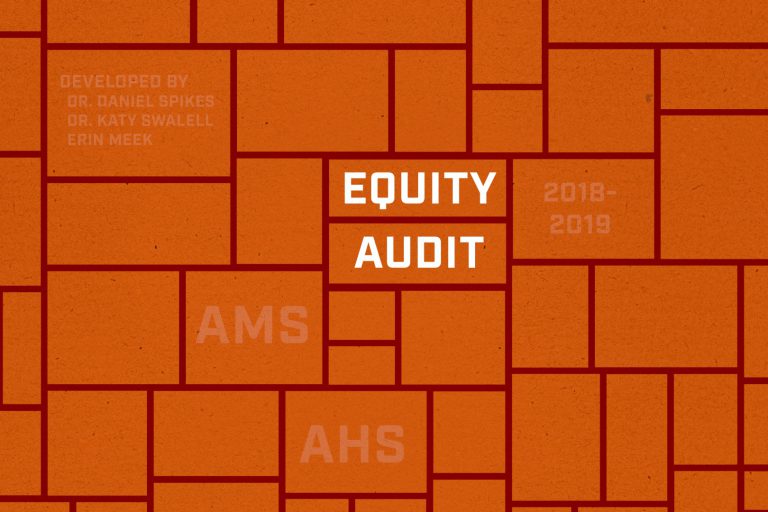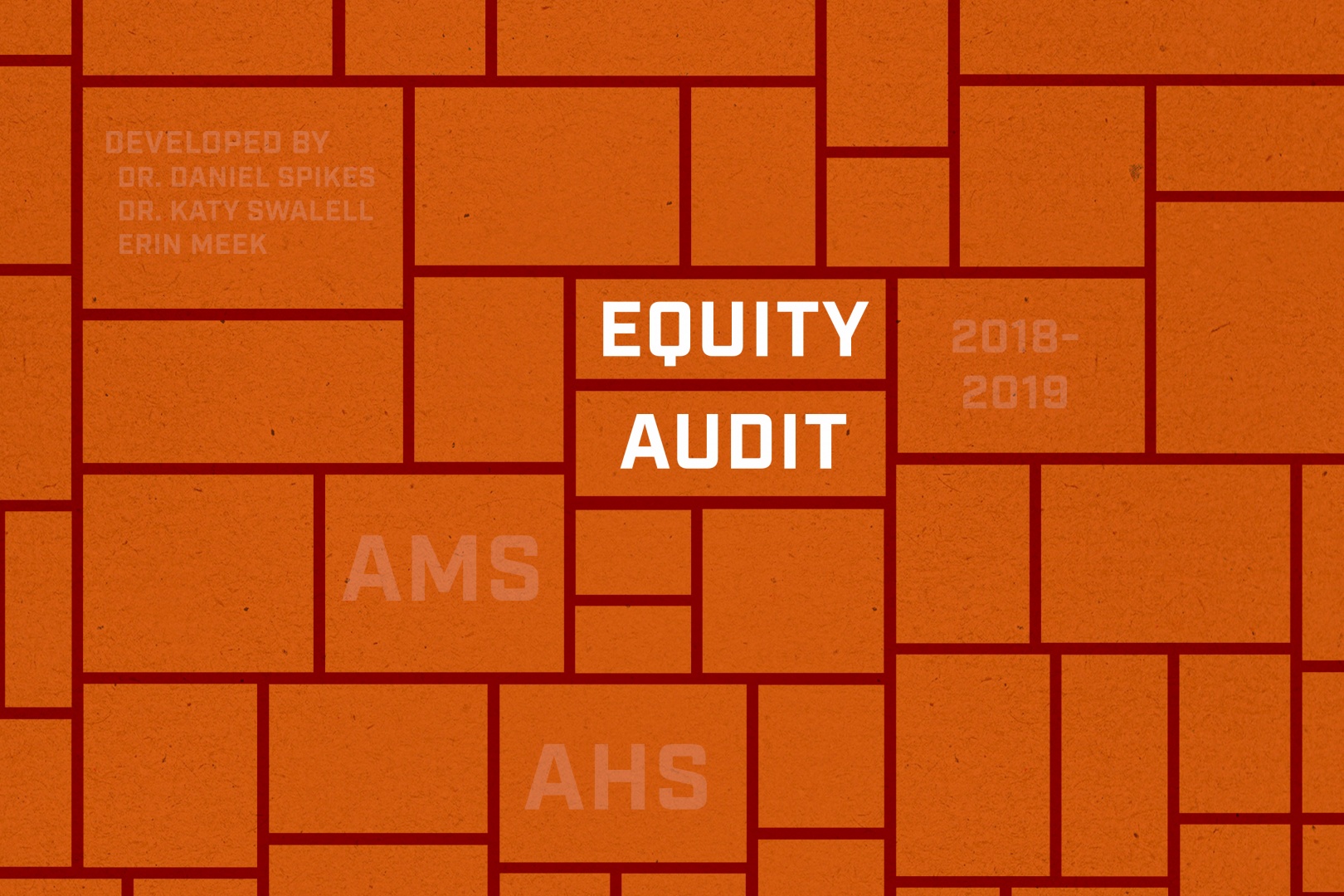

Equity Audit: Ames High School and Ames Middle School (2018-2019)

Why this report now?
In the fall of 2016, Dr. Daniel Spikes, then a professor at Iowa State University, was asked to collaborate with the Ames Community School District (ACSD) to address racial disparities in educational outcomes. More specifically, district leadership wanted to provide professional development to its educational staff to equip them with tools to mitigate racism and racial disparities at the school. As a result, Dr. Spikes partnered with ISU professor Dr. Katy Swalwell, who also has expertise in equity-focused educator preparation. Together, they developed and implemented a three-year equity-focused professional development initiative. At the time of this equity audit, the partnership is beginning its third year.
In the second year of the PD initiative, as part of the learning process, attendees were asked to complete a building-level equity audit for their respective schools. During this learning process, district leadership believed this would be a valuable tool and a natural progression in helping to identify and address some of the racial and other disparities that existed within the district’s schools. Thus, the district asked Katy and Daniel if they would be willing to work with them to conduct equity audits for their schools. They agreed to begin with the middle school and high school and work together with the district on plans for the other schools. Katy and Daniel asked Erin Meek to join them in conducting the audit and writing up the report. This report details our findings from the equity audit conducted at Ames High School.
What can this report tell us?
Equity audits are tools that can be utilized to evaluate the level of equity or inequity that exists within a school building. This tool allows one to audit schooling practices (e.g., school disciplinary practices, teacher placement, student placement); student programming (e.g., gifted and talented programs, special education,extracurricular activities); school demographics (e.g., diversity of staff); and student achievement and attainment (student performance on standardized tests and AP exams; student matriculation and dropout data).
As mentioned, professional development participants were asked to conduct an equity audit of their respective schools as part of the learning process during the second year of the PD initiative. They were asked to collect data in each of the areas described in the paragraph above, utilizing the equity audit template recommended by Elise M. Frattura and Colleen A. Capper in their book Leading for Social Justice: Transforming Schools for All Learners (Corwin Press, 2007). We then used their audits as a starting point to begin our own audit of the school.
From there, Erin Meek met with the current Ames principal and the district’s Data Assessment Coordinator to verify the existing data and to gain access to relevant data systems to pull the additional data needed to complete the report. Throughout this data verification and collection process, Erin frequently communicated with district personnel to ask clarifying questions and to validate the data retrieved. Once all available data were collected, we met one final time with relevant district personnel to ask any remaining questions to ensure that: 1) we had access to all available data, 2) we had properly navigated district data systems to retrieve information used to populate the equity audit template, and 3) the data were accurate.
Therefore, the data in this report are a combination of self-reported data and data retrieved from district data systems and can tell us at a foundational level, whether equity or inequity exists in terms of numbers. In other words, equity is only measured on the data made available and is mostly evaluated in terms of adequate and proportionate representation. For example, if Black students represent 10% of the student population but only 5% of those who are in gifted and talented programs, then this would be considered inequitable. Conversely, if students who are on free or reduced-price lunch represent 20% of the student population and 20% of those who are suspended from school, then that is considered equitable. This evaluation process is explained in further detail in the actual report. Of note, there are a couple of instances where we measure equity beyond proportionate representation. We clarify when that is the case.
Finally, we utilized our experiences and understanding of the research literature to interpret our findings and provide recommendations for further action. In other words, based on the findings, we offer likely causes of the inequities and possible solutions to redressing them, based on our experiences working with other schools and school districts and based on our knowledge of the published empirical evidence. These causes and solutions are written from an asset-based perspective because the literature supports that the disparities evident in many of our findings can often be attributable to inequitable structures and practices within schools and are not necessarily a result of student background, ability, or behaviors i.e., a deficit-based view. Also, an educator who holds an asset-based view does not place blame on students and families when disparities exist but instead, assumes responsibility for these inequities and explores the ways in which schools create and perpetuate inequity in an attempt to disrupt it.
What can this report not tell us?
While this report provides some valuable numeric data, as stated, the equity audit team were only able to provide data that were available. In some instances, some of the needed data were not available (i.e., not collected by school or district-level personnel and/or not captured by available systems). We highlight some of those instances in our report and provide recommendations for further action.
Additionally, this report measures equity at a fairly foundational level. Although these numbers provide a useful starting point, they do not always tell the entire story. Other qualitative data like interview or focus group data from students, staff and community members, along with observational data, could yield additional insight into the degree of inequity that exists within the school.